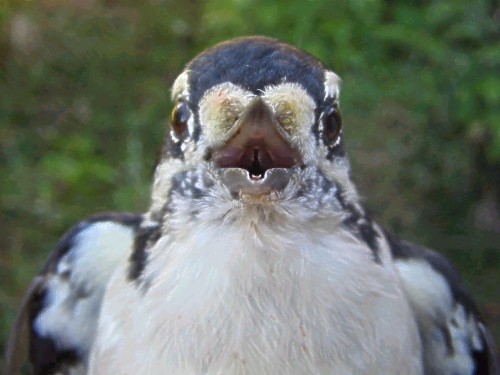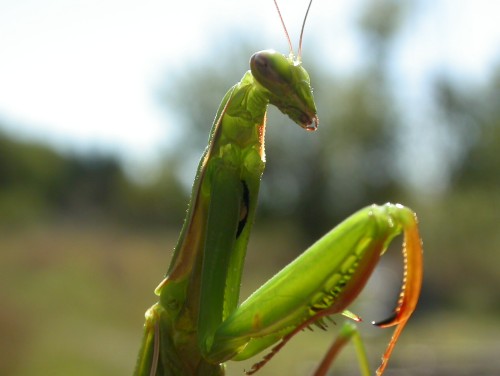|
McGILL BIRD OBSERVATORY |
|||||||||||||||||||||||||||||||||||||||||||||
Welcome to the McGill Bird Observatory weekly report. Click here for a complete listing of our archives. Comments or questions are welcome at mbo@migrationresearch.org.
Banders-in-charge:
Marcel Gahbauer, Barbara Frei, Marie-Anne Hudson Notes: As expected, number of species and birds banded both declined this week, but (presumably) thanks to the unseasonably warm temperatures the dropoff was relatively minor. In fact, considering that we lost two full days this week to rain, we averaged 76 birds banded per day that we were open, and at that pace would have shattered last week's record had the weather not shut us down. However, we can't complain about a week that saw us pass 2000 birds for the season, nor a month of September with 121 species observed. Despite changes in the bird community this week, four members of the top five are the same as they were in week 8. By far the most dominant birds this week were White-throated Sparrow (104 banded, bringing the total over the past three weeks to 234) and Ruby-crowned Kinglet (89). A weekend surge of migrant Black-capped Chickadees pushed them to third place for the week with 38, while Yellow-rumped Warbler (21) and Song Sparrow (18) rounded out the top five. Juncos are increasing in abundance (17), while most warblers have dropped off markedly, though we still had 10 each of Nashville and Black-throated Blue this week. For the season, the only new species banded this week was Hermit Thrush, and the only new species observed was Killdeer. Several species have been staying much later into the fall than usual, including Northern Parula (last seen on Tuesday), Tennessee Warbler, Philadelphia & Red-eyed Vireo (Saturday), and Brown Thrasher, Indigo Bunting and Rose-breasted Grosbeak (Sunday). Our quietest day this week was Tuesday, and things got steadily busier as the days passed, culminating in another record-setting day on Sunday, when we banded 132 birds and had an additional 12 repeats. Leading the way on Sunday were 39 Ruby-crowned Kinglets and 36 White-throated Sparrows. It was also the first time we banded two Sharp-shinned Hawks in a day, and banding 5 warbler species on a beautifully sunny and warm October day was also a very pleasant surprise! Though it has been warm, we did try for Saw-whet Owls one night this week, and were rewarded with a single old female just as we were about to close down for the night. We hope that owl numbers will rise as the temperature falls over the next couple of weeks. Last but not least, special thanks to Gay and Peter Gruner for donating and installing a solar panel and light to help us see both in the early dark mornings and at night when owling, to Sheldon Harvey for donating two desks which have allowed us to greatly improve the layout inside the banding cabin, and to Martin Bowman who came out for a night of owling and ended up spending most of the evening assembling and organizing the new furniture.
|


